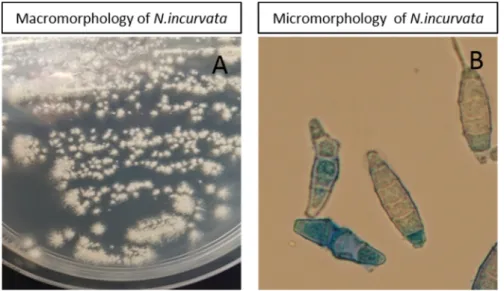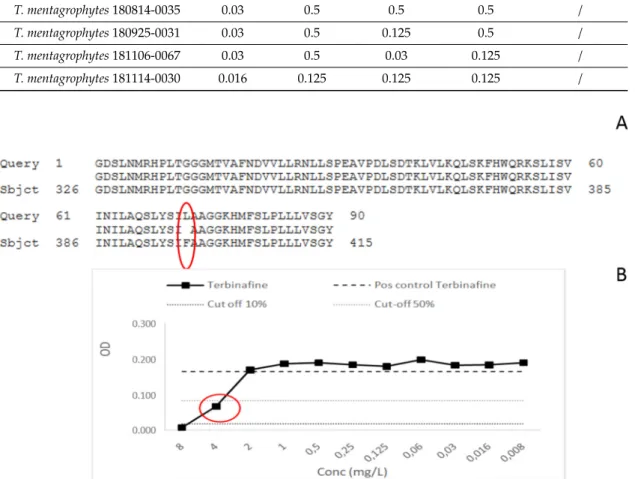Belgian national survey on tinea capitis: epidemiological considerations and highlight of terbinafine resistant T. mentagrophytes with a mutation on SQLE gene
Texte intégral
Figure




Documents relatifs
In this section we review particular course elements that contributed to student learning and a successful experience for instructors... and
Alors que les roues chatouillent les rails, Conduit mes pensées au-delà de la raison.. Quelle est donc
Par ailleurs, les participants ont indiqué que bien que le Document de référence du Référentiel stipule l’importance pour les acteurs impliqués d’agir ensemble au sein
(rotenone sensitive NADH ubiquinone oxido-reductase) activity; CII= respiratory complex II (succinate ubiquinone oxido-reductase) activity; CIII= respiratory complex III (antimycin
L’accès à ce site Web et l’utilisation de son contenu sont assujettis aux conditions présentées dans le site LISEZ CES CONDITIONS ATTENTIVEMENT AVANT D’UTILISER CE SITE WEB.
Assessment of postural balance is commonly carried out by recording centre of pressure (CoP) displacements, but the lack of data concerning reliability of these measures
Sirtuins, class III histone deacetylases, are proteins homologous to the yeast protein Sir2p. Mammalian Sirt1 has been shown to be involved in energy metabolism,
The first case of hemoglobin O-Arab was described in 1960 in an Arab child suffering from sickle cell disease syndrome 20.. The genetic alteration leading to this Hb was
